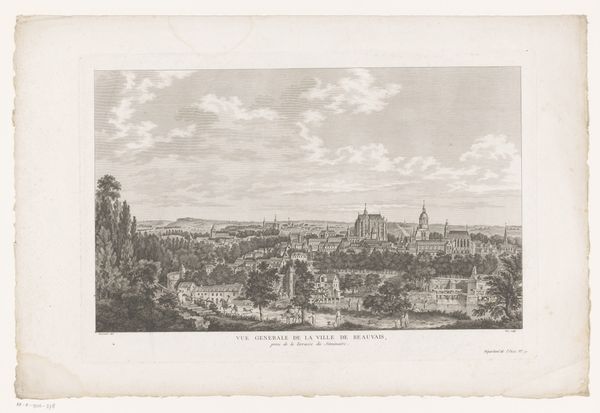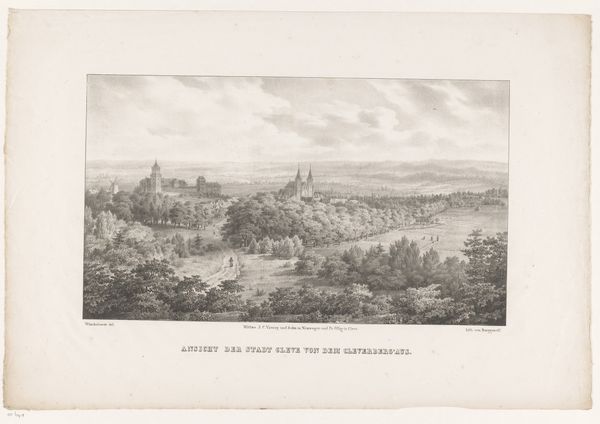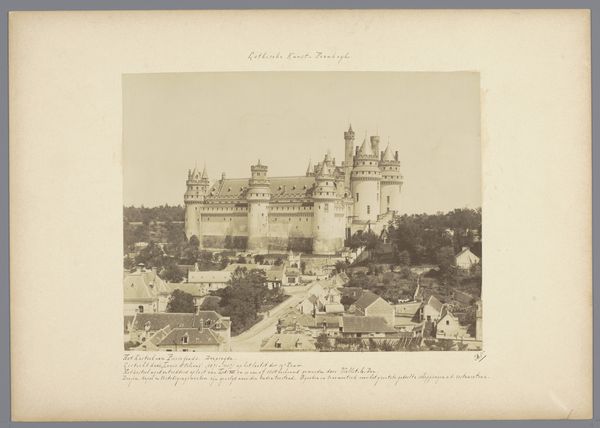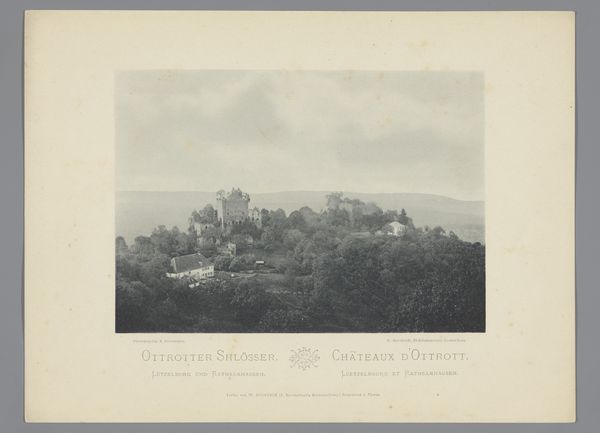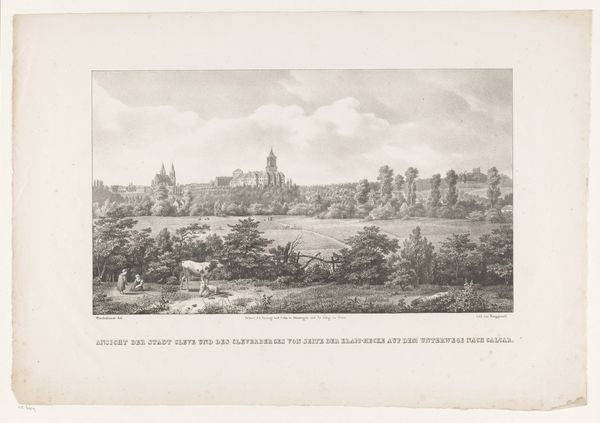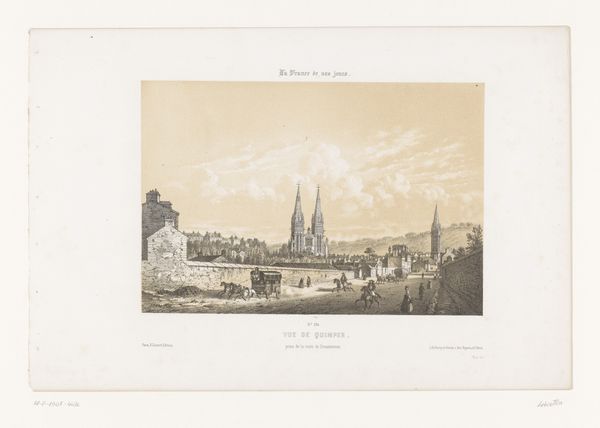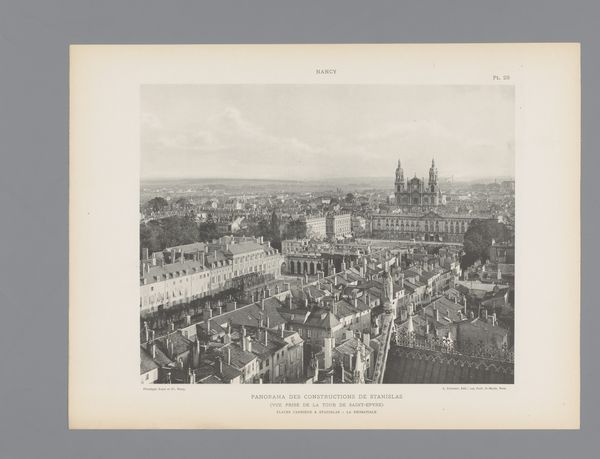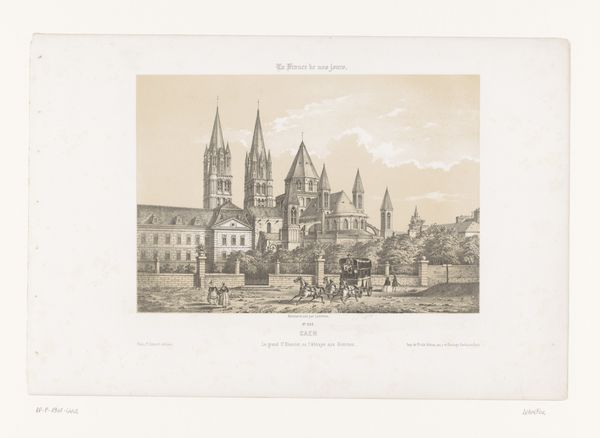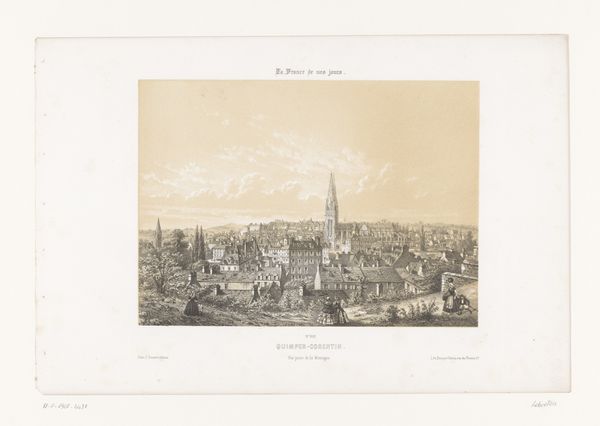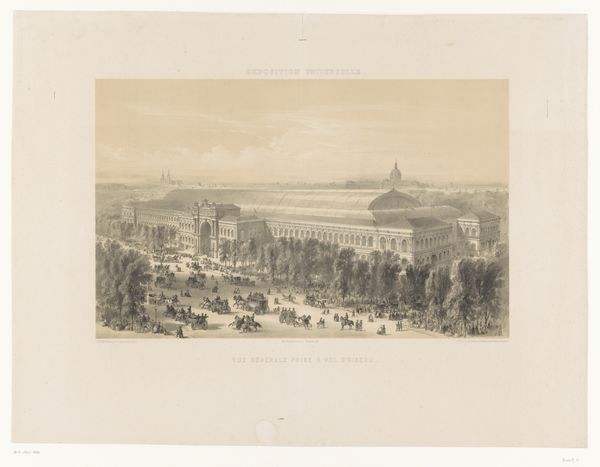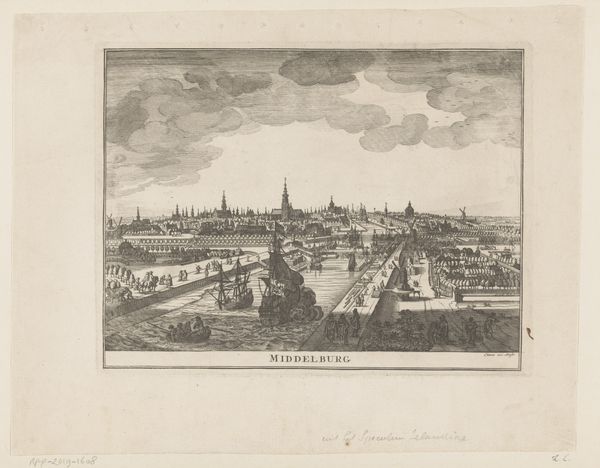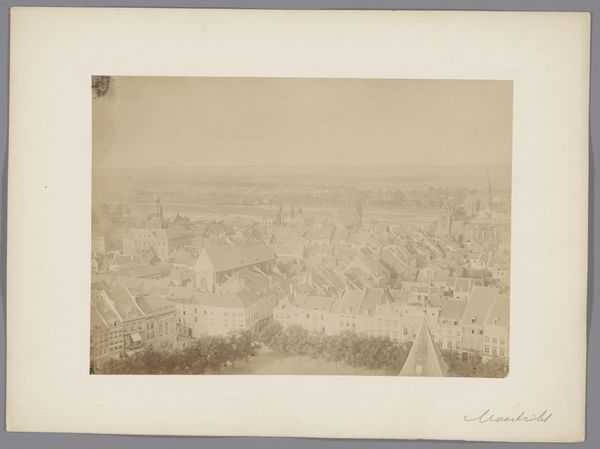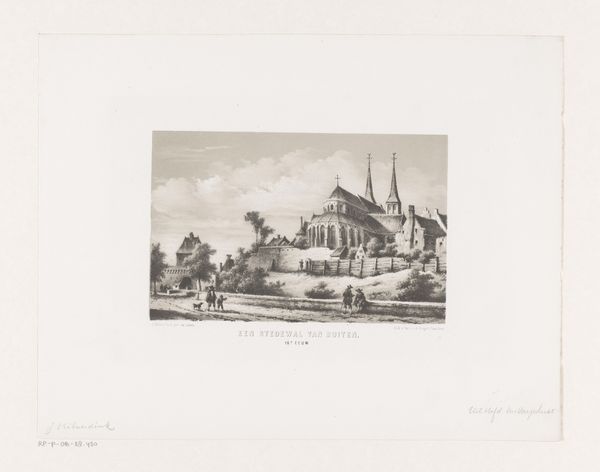
#
neoclacissism
# print
#
landscape
#
cityscape
Dimensions: height 376 mm, width 555 mm
Copyright: Rijks Museum: Open Domain
Editor: So, this is "Gezicht op Kleef," a print made around 1825 by Guillaume Philidor Van den Burggraaff, currently residing at the Rijksmuseum. It's a very detailed cityscape... almost serene, in a way. What’s your interpretation of this work? Curator: This print offers a seemingly picturesque scene, but I'm drawn to the underlying power structures inherent in landscape art of this period. Notice the vantage point. We’re looking *down* upon the city, a common perspective employed by the elite to assert dominance. The windmills, while seemingly benign, represent industrial power and control over resources. Editor: That's an interesting point! I hadn't considered the viewpoint as an expression of power. The windmills just seemed...quaint. So you're saying the artist might be subtly commenting on social hierarchies? Curator: Precisely. Think about who would commission or purchase such a work. Likely it would be members of the ruling class. Consider the lack of any real depiction of labor, yet this 'picturesque' scene couldn't exist without exploitation of resources. Ask yourself who benefits from this romanticized view of the town. Editor: I see what you mean. By idealizing the landscape, it sort of erases the realities of everyday life for the working class. So what do we gain by looking at this piece from that lens? Curator: By acknowledging the politics embedded within these seemingly harmless images, we can understand how power dynamics shaped perceptions of place and identity in the 19th century and onward. Editor: Wow, that gives me a completely different way to appreciate this artwork! It’s not just a pretty view. It’s a statement, even if unintentional, about who holds the power in that society. Thanks, I hadn’t thought of that! Curator: It’s crucial to unpack the historical baggage these images carry so we aren’t passively accepting the dominant narratives. I’m glad you’re seeing new potential for what it means to engage with visual culture.
Comments
No comments
Be the first to comment and join the conversation on the ultimate creative platform.
